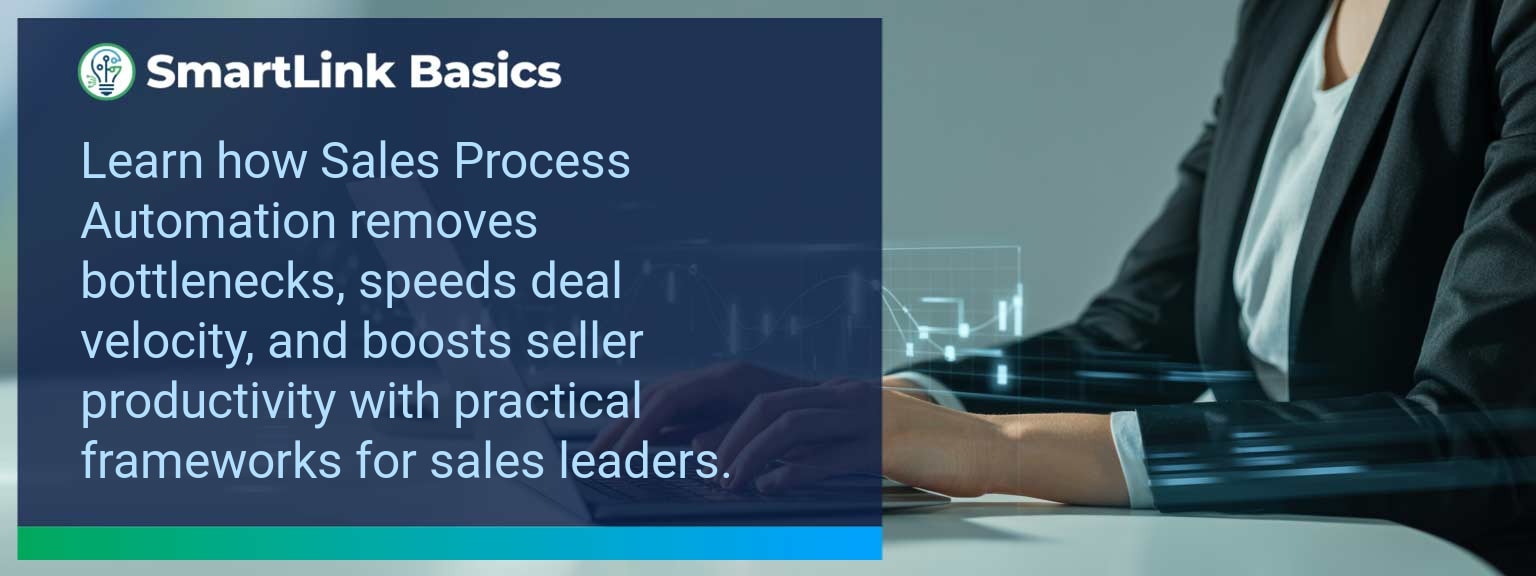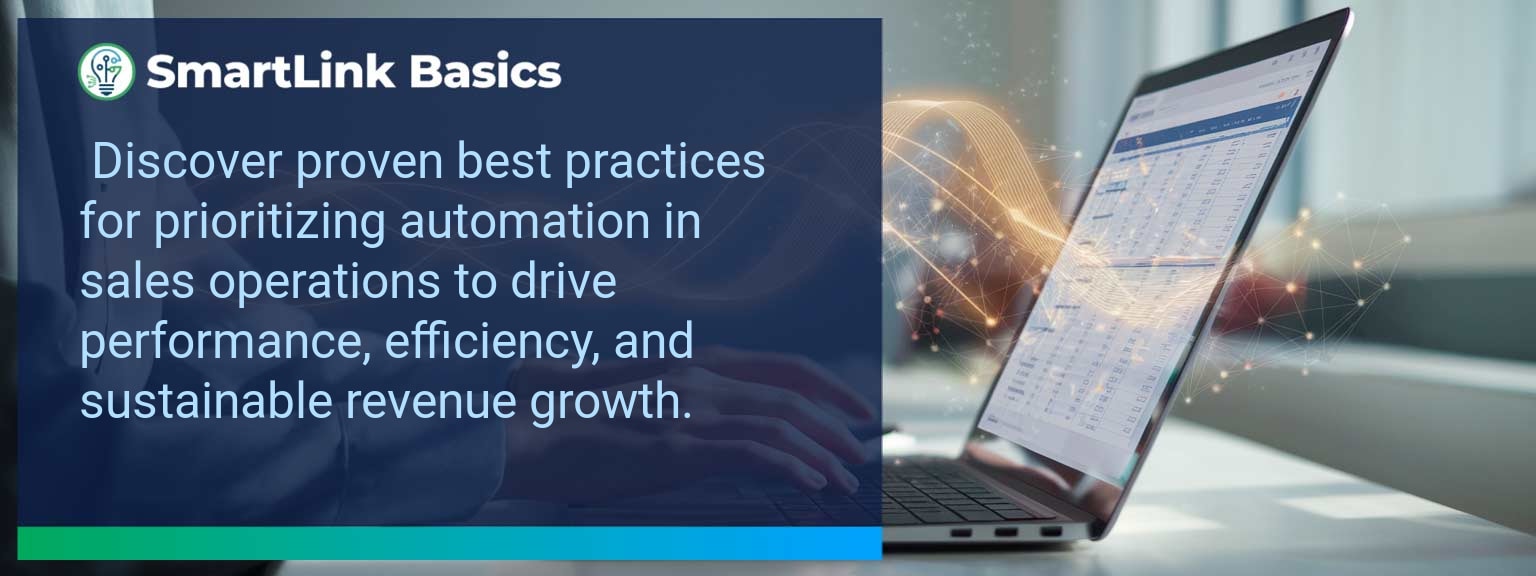Precise, data-driven automation is reshaping operational efficiency across sales organizations. According to McKinsey, AI-powered process optimization can increase productivity by up to 40% when applied effectively. At SmartLink Basics, we see sales leaders accelerating growth by implementing machine learning automation to manage complex workflows, minimize manual intervention, and improve accuracy.
This article examines the core challenges of manual workflow management, outlines how intelligent automation tools transform sales operations, and details measurable business impacts. You will also find a 90-day implementation plan, key performance metrics, and a roadmap for advancing toward autonomous operations.
- Machine learning automation streamlines sales workflows and eliminates repetitive tasks.
- Predictive algorithms improve pipeline forecasting accuracy.
- Data-driven automation enhances process consistency.
- AI task automation frees sales reps to focus on high-value activities.
- Intelligent workflows support scalable, long-term revenue growth.
Common Issues In Manual Workflow Management
Manual workflow processes in sales teams suffer from inconsistency, bottlenecks, and avoidable delays. As deal volumes and touchpoints grow, the likelihood of human error rises, and important opportunities slip through the cracks. This results in missed quotas, uneven customer experiences, and reduced operational visibility. Consider a sales team manually tracking opportunity stages in spreadsheets. By the time data is updated, several deals have already progressed or fallen off, creating a lag in strategy alignment. Without automation, leaders lack accurate, real-time insights. Sales organizations must identify where manual interventions create the highest friction and implement targeted automation to save time and standardize execution.Leveraging Machine Learning Automation For Seamless Workflow Execution
Machine learning automation applies predictive algorithms and AI task automation to streamline deal progression, qualification, and customer engagement. Intelligent automation tools can identify the most promising leads, recommend next steps, and trigger follow-up actions without human input. For example, an AI-powered CRM can automatically assign leads to the best-fit salesperson based on historical win rates and engagement scores. This targeted routing reduces lag time and increases close probability. To integrate effectively, sales leaders should focus on high-impact workflow automation with machine learning that aligns with strategic revenue goals.Key Improvements Achieved Through Automation
When deployed with a clear design, machine learning automation delivers measurable results: – Improved forecast accuracy through data-driven probability scoring. – Reduced sales cycle length thanks to real-time decision prompts. – Increased rep productivity by eliminating redundant updates. One enterprise reduced its lead response time by 72% after integrating automation for email sequencing and cross-platform notifications. This directly improved win rates for high-value accounts. Leaders should track both efficiency and revenue outcomes to validate returns and guide scaling decisions.The Next Phase Of Autonomous Operations
The progression from assisted workflows to fully autonomous revenue operations will rely on AI-powered systems that manage cross-departmental processes. This includes intelligent workflows capable of real-time adaptation to market signals. Sales leaders adopting these systems early will gain competitive advantage through faster cycle times, proactive risk detection, and enhanced customer personalization. The goal is to create a self-optimizing sales engine where manual oversight is strategic, not procedural.| Category | Metric | Definition | Target |
|---|---|---|---|
| Leading | Automated Lead Routing Rate | % of leads assigned automatically via machine learning automation | 95%+ |
| Leading | Workflow Completion Speed | Average time from task trigger to completed action | Under 24 hours |
| Lagging | Revenue Per Rep | Total closed revenue divided by active sales reps | +15% YoY |
| Lagging | Pipeline Conversion Efficiency | Closed deals ÷ active opportunities | 30%+ |
| Quality | Customer Response Time | Average first-response speed to customer inquiries | Under 1 hour |
| Quality | Process Compliance Accuracy | % of workflows executed without deviation from automation rules | 98%+ |
Get the 90-day plan, coaching rubric, and dashboard template to operationalize AI in your enablement program.









